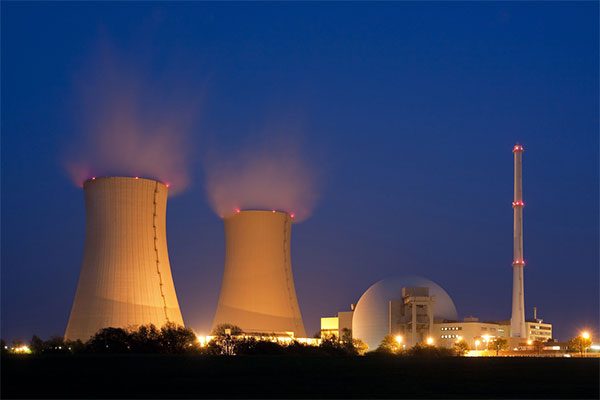- Utility-scale solar and wind have outpaced the new Vogtle-3 nuclear reactor in terms of added electrical generating capacity during the first four months of 2023.
- Installed utility-scale solar capacity grew by 5,390 MW, and wind capacity grew by 3,620 MW in just four months, while the nuclear reactor added only 1,100 MW after almost 14 years of construction.
- The forecast for the next three years indicates a significant increase in solar and wind capacity, surpassing the growth of nuclear power and leading to a decline in total installed nuclear generating capacity.
Based upon a review by the SUN DAY Campaign of data recently released by the Federal Energy Regulatory Commission (FERC), utility-scale solar and wind have apparently each added more new electrical generating capacity during the first four months of 2023 than the new Vogtle-3 nuclear reactor that just came on-line after nearly 14 years of construction and major cost overruns.
FERC had earlier reported in its monthly “Energy Infrastructure Update” report for December 2022 that installed U.S. utility-scale solar generating capacity had reached 80,400 megawatts (MW) by the end of last year.
However, in its most recent report, with data through April 30, 2023, FERC cites 85,790-MW of installed solar generating capacity… and that does not include new small-scale distributed PV systems. Meanwhile, FERC listed 143,280-MW of installed wind generating capacity at the end of 2022 but, four months later, that figure had been increased to 146,900-MW.
This would suggest that installed utility-scale solar and wind generating capacity grew by 5,390-MW and 3,620-MW respectively during the first third of this year … or in just four months. By comparison, it took nearly 14 years to bring the new Vogtle-3 nuclear reactor in George on-line and thereby increase the nation’s nuclear capacity by just 1,100-MW.
The figures also suggest that the actual electrical generation by the new wind and solar capacity will exceed that of Vogtle-3 in the months and years ahead. While the nation’s nuclear reactors have a higher capacity factor (92.6%) than do U.S. wind and solar farms (36.1% and 24.8% respectively), the new renewable energy installations will produce more electricity than Vogtle-3 simply because of the much greater capacity they added in the first four months of 2023.
In addition, FERC’s data indicate that the gap between nuclear-generated and renewably-generated electricity will grow dramatically over the next three years. Between May 2023 and April 2026, FERC anticipates 77,861-MW of net new “high probability” utility-scale solar capacity additions accompanied by 19,935-MW of net new “high probability” wind additions. There may, in fact, be as much as 213,018-MW of solar and 66,276-MW of new wind capacity in the three-year pipeline.
By comparison, FERC foresees the addition of just 1,100-MWof new nuclear power during that time frame (i.e., the Vogtle-4 reactor which is expected to come on-line in early 2024 or possibly late 2023).
FERC’s three-year forecast actually indicates that total installed nuclear generating capacity to decrease by 123-MW while the installed generating capacities of coal, natural gas, and oil will likewise drop by 24,934-MW, 2,242-MW, and 1,490-MW respectively.
Should just FERC’s “high probability” forecasts materialize, by April 2026, nuclear power’s share of total U.S. installed generating capacity will have declined from 8.06% to 7.63% while wind’s share will grow from 11.55% to 12.44% and solar’s share will nearly double to 12.20% from 6.75% today. Thus, wind plus solar will account for more than a quarter of the nation’s installed generating capacity. Further, the mix of all renewables (i.e., also including hydropower, geothermal, and biomass) will expand from 27.81% to 33.69%.
On the other hand, like nuclear power, installed U.S. fossil fuel capacity will drop over the next three years: natural gas – 41.67% (from 44.13% in April 2023), coal – 14.15% (from 16.89%), and oil – 2.70% (from 2.96%).
“Comparing recent growth trends by nuclear power versus wind and solar yields a simple conclusion – there is no comparison,” noted the SUN DAY Campaign’s executive director Ken Bossong. “Renewable energy sources can be brought on line far more quickly, in much larger volume, and at lower cost than nuclear power or the mix of fossil fuel options.”
—
This article was provided for publication by Ken Bossong of the SUN DAY Campaign.
The SUN DAY Campaign is a non-profit research and educational organization founded in 1992 to support a rapid transition to 100% reliance on sustainable energy technologies as a cost-effective alternative to nuclear power and fossil fuels and as a solution to climate change.














Comments